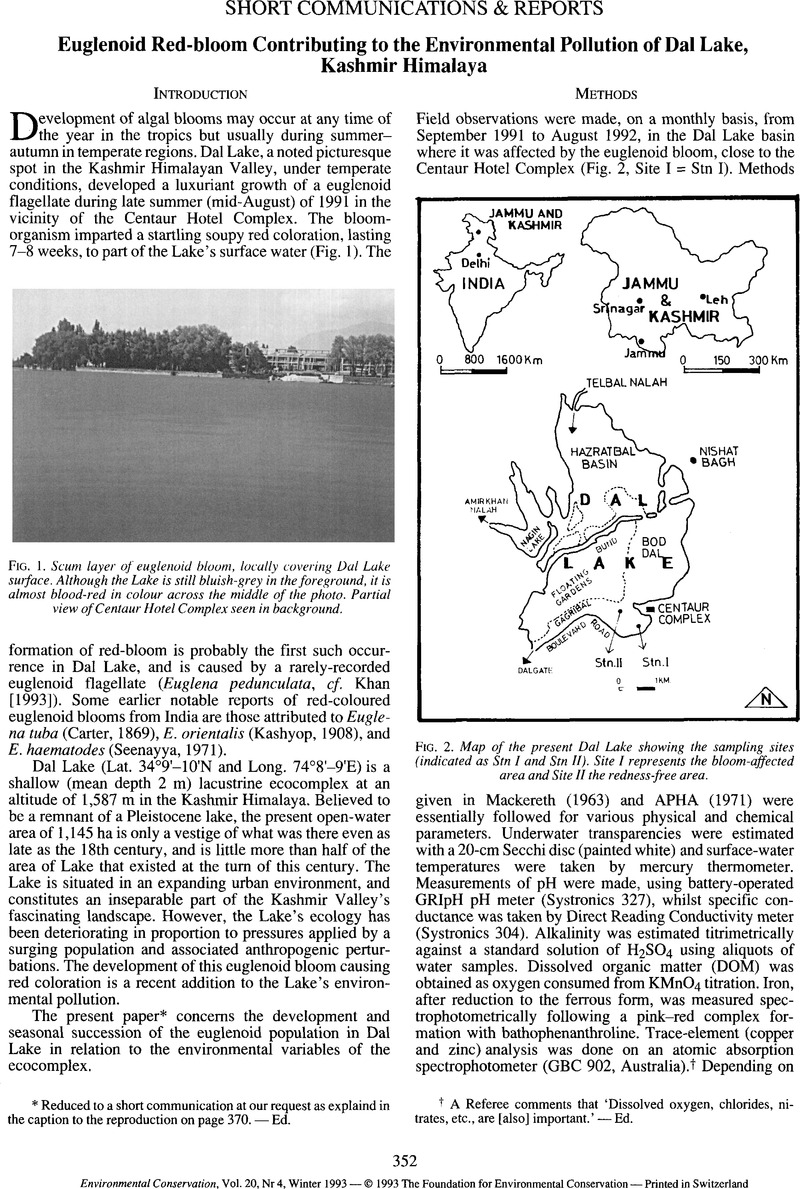Crossref Citations
This article has been cited by the following publications. This list is generated based on data provided by Crossref.
Khan, M. A.
1996.
The phytoplankton periodicities of two warm-climate lakes subject to marked seasonal variability.
Journal of Tropical Ecology,
Vol. 12,
Issue. 4,
p.
461.
Badar, Bazigha
Romshoo, Shakil A.
and
Khan, M. A.
2013.
Integrating biophysical and socioeconomic information for prioritizing watersheds in a Kashmir Himalayan lake: a remote sensing and GIS approach.
Environmental Monitoring and Assessment,
Vol. 185,
Issue. 8,
p.
6419.
Chaudhuri, Dipankar
Ghate, Nikhil Baban
Deb, Shampa
Panja, Sourav
Sarkar, Rhitajit
Rout, Jayashree
and
Mandal, Nripendranath
2014.
Assessment of the phytochemical constituents and antioxidant activity of a bloom forming microalgae Euglena tuba.
Biological Research,
Vol. 47,
Issue. 1,
Rather, Ishtiyaq Ahmad
and
Dar, Abdul Qayoom
2020.
Assessing the impact of land use and land cover dynamics on water quality of Dal Lake, NW Himalaya, India.
Applied Water Science,
Vol. 10,
Issue. 10,
Gupta, Swati Prabha
Tiwari, Priyanka
and
Sharma, Bechan
2022.
Protective Effect of Methanolic Extract of Euglena tuba Against Dalton Lymphoma Induced Oxidative Stress in BALB/c Mice.
Indian Journal of Clinical Biochemistry,
Vol. 37,
Issue. 4,
p.
410.
Sabha, Inam
Hamid, Aadil
Bhat, Sami Ullah
and
Islam, Sheikh Tajamul
2022.
Water Quality and Anthropogenic Impact Assessment Using Macroinvertebrates as Bioindicators in a Stream Ecosystem.
Water, Air, & Soil Pollution,
Vol. 233,
Issue. 9,
Gupta, Swati Prabha
Siddiqi, Nikhat Jamal
Khan, Haseeb A.
Alrokayan, Salman H.
Alhomida, Abdullah S.
Singh, Rishi Kant
Verma, Praveen Kumar
Kumar, Sandeep
Acharya, Arbind
and
Sharma, Bechan
2022.
Phytochemical Profiling of Microalgae Euglena tuba and Its Anticancer Activity in Dalton's Lymphoma Cells.
Frontiers in Bioscience-Landmark,
Vol. 27,
Issue. 4,



